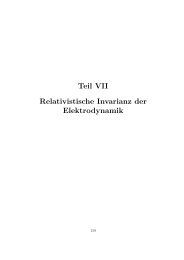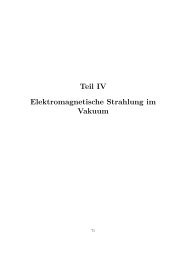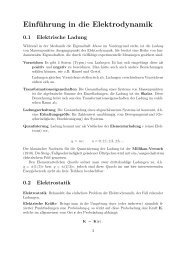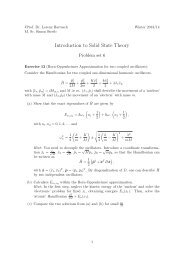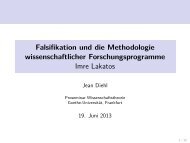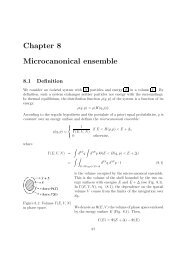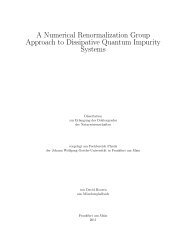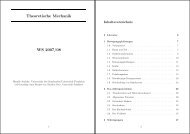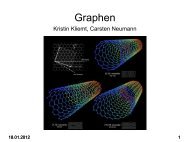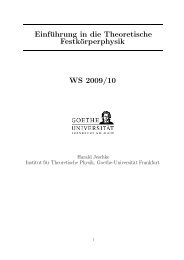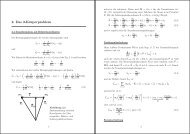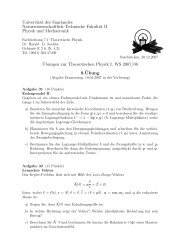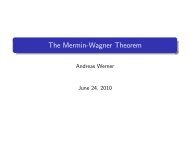Microscopic Modelling of Correlated Low-dimensional Systems
Microscopic Modelling of Correlated Low-dimensional Systems
Microscopic Modelling of Correlated Low-dimensional Systems
Create successful ePaper yourself
Turn your PDF publications into a flip-book with our unique Google optimized e-Paper software.
Chapter 2: Method 13<br />
In magnetic systems or, in general, in systems where open electronic shells are involved,<br />
better approximations to the exchange-correlation functional can be obtained by introducing<br />
the two spins densities, ρ↑(r) and ρ↓(r), such that ρ(r) = ρ↑(r) + ρ↓(r), and (ζ(r) =<br />
ρ↑(r) − ρ↓(r))/ρ(r) is the magnetization density. The non-interacting kinetic energy splits<br />
trivially into spin-up and a spin-down contributions, and the external and Hartree potentials<br />
depend on the fully density ρ(r), but the approximate exchange-correlation functional will<br />
depend on both spin densities independently, Exc = Exc[ρ↑(r), ρ↓(r)]. The density, given<br />
by Eq. (2.16) contains a double summation, over the spin states and over the number <strong>of</strong><br />
electrons in each spin state. These latter have to be determined according to the single-<br />
particle eigenvalues, by asking for the lowest N = N↑ + N↓ to be occupied.<br />
The equivalent <strong>of</strong> the LDA in spin-polarized systems is the local spin density approximation<br />
(LSDA), which basically consists <strong>of</strong> replacing the exchange-correlation energy density with<br />
a spin-polarized expression:<br />
E LSDA<br />
�<br />
xc [ρ↑(r), ρ↓(r)] =<br />
[ρ↑(r) + ρ↓(r)]ɛ h xc[ρ↑(r), ρ↓(r)]dr (2.18)<br />
obtained for instance, by interpolating between the fully-polarized and fully-unpolarized<br />
exchange-correlation energy densities using an appropriate expression that depends on ζ(r).<br />
To extend the local density approximation to systems with more significant non-<br />
homogeneous densities, several techniques have been proposed. The most successful one<br />
is the generalized gradient approximation (GGA), where the real Exc[ρ(r)] is expressed as a<br />
functional <strong>of</strong> the density ρ(r) and its gradient ∇ρ(r):<br />
where Fxc is a correction.<br />
�<br />
Exc[ρ] =<br />
�<br />
ρ(r)ɛxc(ρ(r)) dr +<br />
Fxc[ρ, |∇ρ|] dr (2.19)<br />
The GGA formalism gives a better description <strong>of</strong> inhomogeneous systems, like transition<br />
metals, and it significantly improves the binding and atomic energies, it improves bond<br />
lengths, angles, predicting good results also in the cases where LDA fails. It improves ener-<br />
getics, geometries and dynamical properties <strong>of</strong> water, ice and water clusters. GGA accounts<br />
specifically for density gradients that are neglected in pure LDA. For the GGA calculations<br />
performed in this work, the Perdew-Burke-Ernzerh<strong>of</strong> (PBE96) [93] parameterization for<br />
the exchange-correlation functional was used. This functional improves the description <strong>of</strong><br />
hydrogen-bonded systems.



